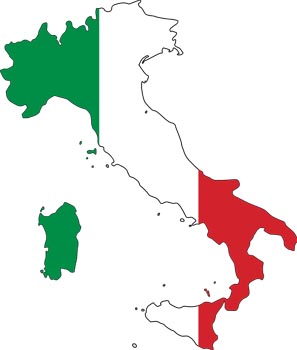IN THE RADICAL PRESS / IL MANIFESTO
by Thomas Fazi*
The latest figures from the European Central Bank are clear, and rubbish the rhetoric of “recovery” : the Eurozone is now on the brink of deflation. As one can easily deduce, if inflation indicates an increase in the prices of goods and services, deflation indicates a decrease in the general price level and is caused by a reduction in demand. This in turn leads to a decrease in production, which leads to a reduction in wages and employment, which further depresses demand, and so on. In addition, by increasing the real value of debt – both public and private (such as a mortgages) – deflation (or inflation that is too low) makes it almost impossible for Italy as a whole and for individuals to repay their debts. And indeed, as we know, the debt / GDP growth ratio continues to rise, even in the face of a reduction in the spread, the gap between the cost of the Italian government borrowing compared to Germany.
This vicious circle is called a “deflationary spiral” , and is generally considered a recessive process – an extremely dangerous depressant (most historians agree that it was the social and political chaos caused by the deflationary spiral of the thirties to contribute to the rise of Hitler, and not the hyperinflation of the twenties), and – more worryingly – it is very difficult to reverse once it has got under way, as Japan demonstrates. And there is an increasingly large chorus of voices – OECD, International Monetary Fund, The Economist, Financial Times – which calls on the ECB to do something to stem the risk of deflation in the eurozone. This explains why at the meeting of Thursday, the board of the ECB began discussing for the first time the use of unconventional monetary policy measures, above all quantitative easing, or the purchase of government bonds by the central bank.
But would that that really be the panacea for the eurozone that many commentators seem to allude to? It depends. First, we must specify what we mean by quantitative easing, and what is the goal that we aim to obtain by recourse to it. ECB President Mario Draghi and others from the monetarist school see quantitative easing purely as a weapon intended to alleviate the conditions of the financial system, not governments. The idea is that by increasing the reserves – and therefore liquidity – of banks, they will be more willing to lend money to businesses and households, thus getting the economy moving .
The problem is that even in those countries that have made extensive use of quantitative easing since the crisis (for example the USA), this has not happened. The reason is that in a situation where demand and growth are stagnating – and therefore the potential profits from the real economy are poor ( this is especially true for Europe, but also to a lesser extent the United States) – banks are reluctant to invest and lend, regardless of the liquidity injections by central banks. In these cases, the public sector must take charge of putting money put back into circulation, by means of expansionary fiscal policies (herein lies lies, in large part, the “secret” of the U.S. recovery ) . In this sense, therefore, the purchase of government bonds by the ECB would only make sense if it supported a policy of fiscal stimulus, deficit spending (in which the public sector, in essence, spends more than it collects in the form of taxes ), even better if implemented at European level.
Staying within the existing treaties, this would mean, first loosening the absurd budget constraints imposed by the fiscal compact. But the truth is that without a radical reform of the European architecture – allowing the central bank to directly finance governments and act as a lender of last resort to individual countries and provider of Eurobonds issued collectively in the eurozone, as well as providing a mechanism for debt restructuring – the Eurozone is destined to implode, with devastating consequences.
* author of The Battle for Europe and regular contributor to sbilanciamoci.info blog
Edit/translation by Revolting Europe





That was the most neo-liberal article I have seen yet…..you cannot be a real union/left writer. We all know QE is the cause of stagnation and used only as a tool to move real estate into the hands of the people creating the massive financial fraud to begin with. In the US QE was used to lower housing loan interest rates while huge investment firms bought and sold bundled foreclosures……it was only meant to make this subprime mortgage fraud part 2 cheaper for the rich. It serves as well to take all of the toxic subprime loans off the hands of the bank’s accounts with buy-backs by the FED or ECB with the intent to hand all that debt to the Treasury for taxpayers to pay. None of this has anything to do with getting the economy running. The intent of the TROIKA and FED is to keep these economies stagnant as the impoverish people and government coffers to privatize all public assets in the West just as the USSR did during PERESTOIKA in Russia.
See how differ this sounds—–and what I am saying is true.
So, simply nationalizing banks in Europe and US and recovering the trillions of dollars still owed government coffers and individuals lost to fraud will downsize these banks and reverse wealth inequity caused by this massive fraud. JUST REINSTATE RULE OF LAW AND VOILA——WEALTH INEQUITY IS GONE AND PEOPLE HAVE MONEY TO SPEND AND THE ECONOMY BECOMES HEALTHY. Stay with the TROIKA and they will leave the economy stagnant until they have sucked all wealth from Europe and the US.
Posted by Cindy Walsh | April 6, 2014, 1:50 pm